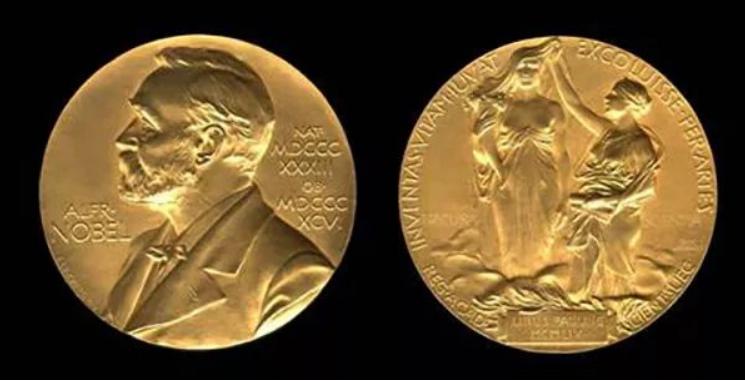The Covers of the Nobel Prize Certificates are Full of Illustrations!
Every year's Nobel Prize certificates will be designed by a special artist according to the characteristics and achievements of the winners. Not only that, the cover colors of award certificates in different fields are different, which are designed by different countries and institutions.
I. Nobel Prize in Literature
The Swedish Akademien is responsible for the design of the Nobel Prize in literature. The cover color of the award is not fixed, and it is finally put into a handmade box with the name of the winner printed on it.
i. Hemingway
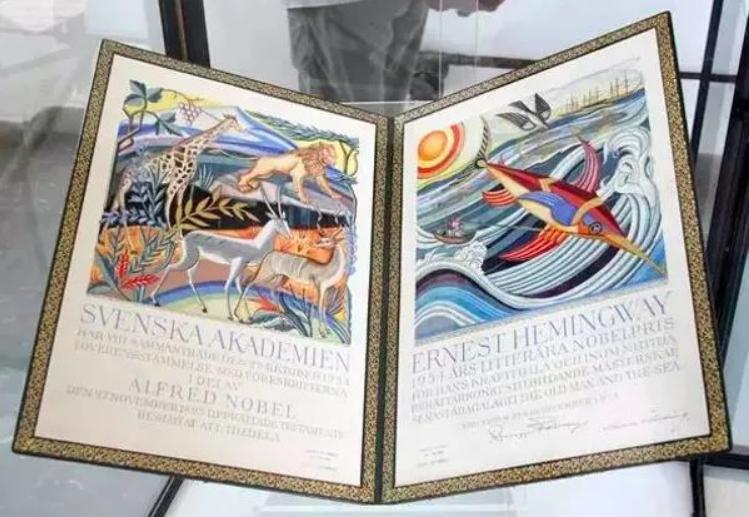
In 1954, Hemingway won the Nobel Prize IN literature for the Old Man and the Sea, and the painting content in the certificate is the old man and the sea, the waves, the boats and the big fish, are lifelike, and the colors are very bright.
ii. Ángel Asturias
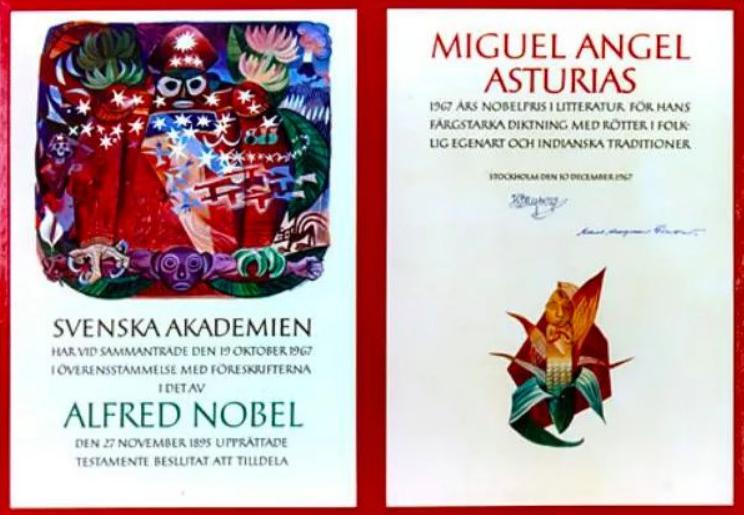
The Guatemalan author Miguel Angel Asturias won the 1967 Nobel Prize in Literature for his work Men of Maize. Angel's works are rooted in their own national characteristics and Indian tradition, and the award certificates designed for him all used Indian elements.
iii. Isaac Bashevis Singer
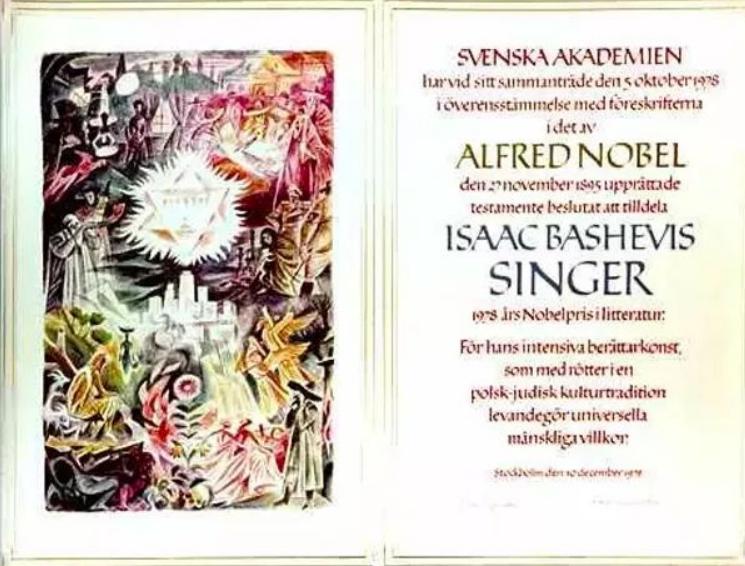
Singer is an American Jewish writer, known as the "Master of Short Stories" in the 20th century. As a Jew, all his works express his worries about the future of his nation, and his certificate design also reflects this feature. In the middle of the certificate is the Star of David of the Jews, below is New York, and beside them are the Magician of Lublin, Rabbi holds the Jewish Torah Roll, Jacob in The Slave, Satan in Goray, Messiah, and Nazis on the far right.
iv. Kertész Imre
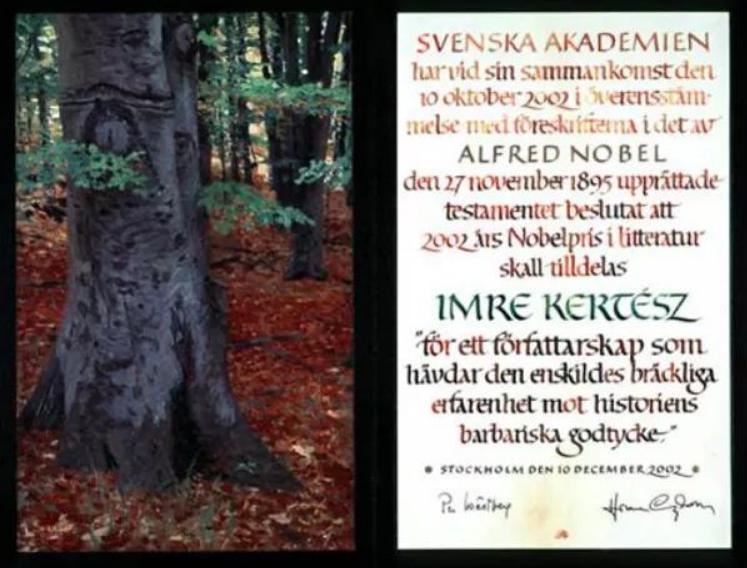
Kertész Imre, a Hungarian Jewish author, who was awarded the Nobel Prize in Literature in 2012 for his autobiographical novel Fatelessness. He described his experience in the concentration camp in the novel. His certificate is also designed in a realistic style, which at first glance seems to be a photo.
v. Mo Yan
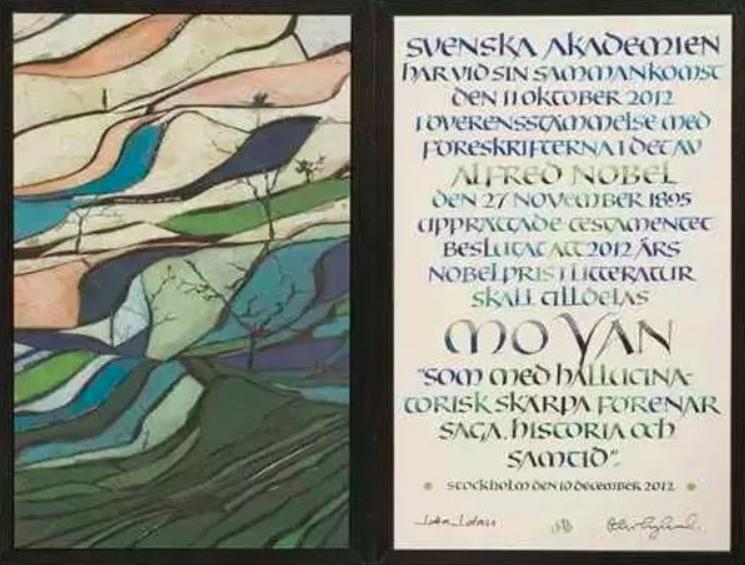
Mo Yan won the 2012 Nobel Prize in Literature for his novel Frog. He is known as a root-seeking literary writer, whose works are full of local flavor. His certificate design also follows this style, with rolling fields to highlight the local flavor.
II. Nobel Prize in Physics
The cover of the Physics Prize certificate is colored and designed by the Royal Swedish Academy of Sciences.
i. Marie Curie
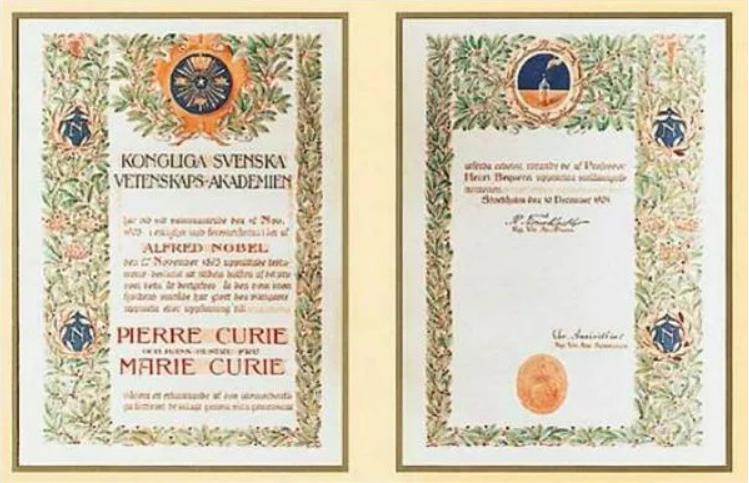
In 1903, the Curies and Becquerel jointly won the Nobel Prize in Physics for their research on radioactivity. With scattered pattern on the upper left, a steaming bottle on the right, and flower edges surrounded, it's the typical early certificate style.
ii. Einstein
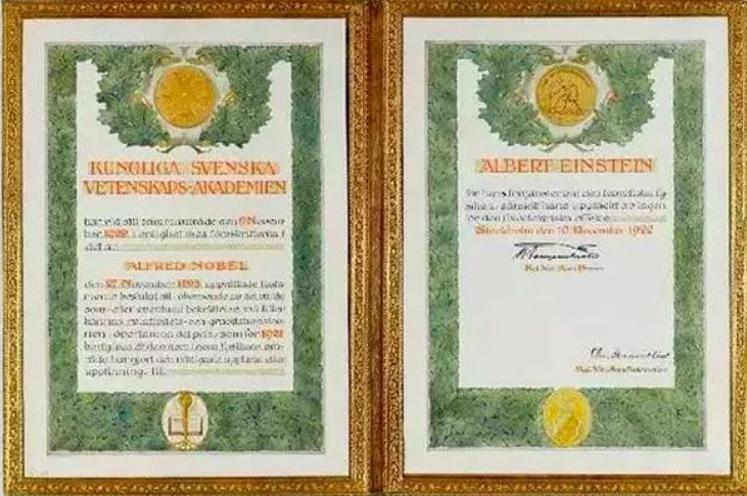
Einstein won the 1921 Nobel Prize in Physics for his Photon hypothesis, which successfully explains the photoelectric effect. It's also a relatively simple style in the early days, with his medal on it.
iii. Chen Ning Yang
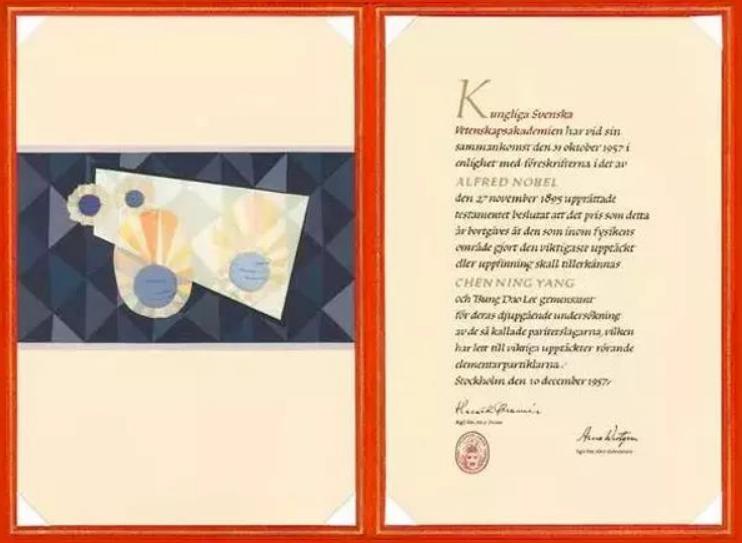
In 1957, Chen Ning Yang and Tsung-Dao Lee won the Nobel Prize in Physics for jointly proposing parity nonconservation theory. This certificate design directly abstracts particles and uses mirror elements.
iv. Eric A. Cornell
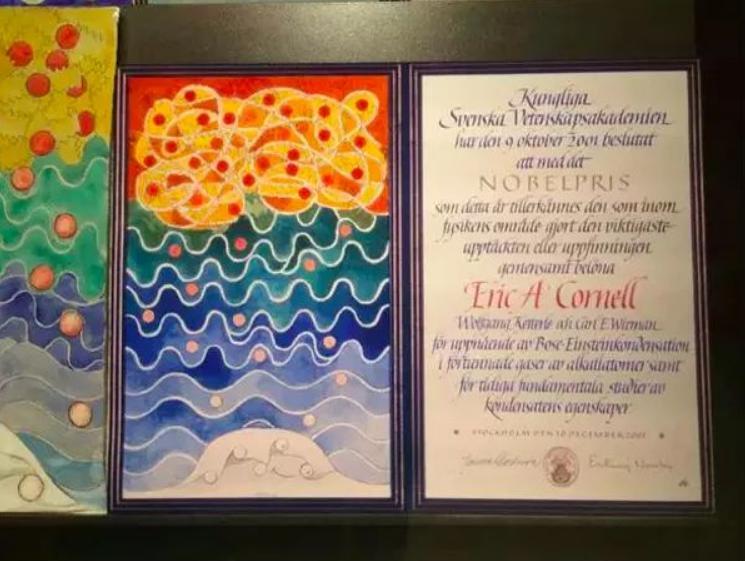
Eric Cornell won the 2001 Physics Prize for his work on Bose-Einstein condensate. He studied the formation of Bose-Einstein condensation in a dilute gas of alkali metal atoms. Condensation is a superfluid gaseous state. This certificate is designed to flow underneath with a cloud of gas above, which is also very simple and clear, and the contrast color is really nice.
v. Peter Higgs
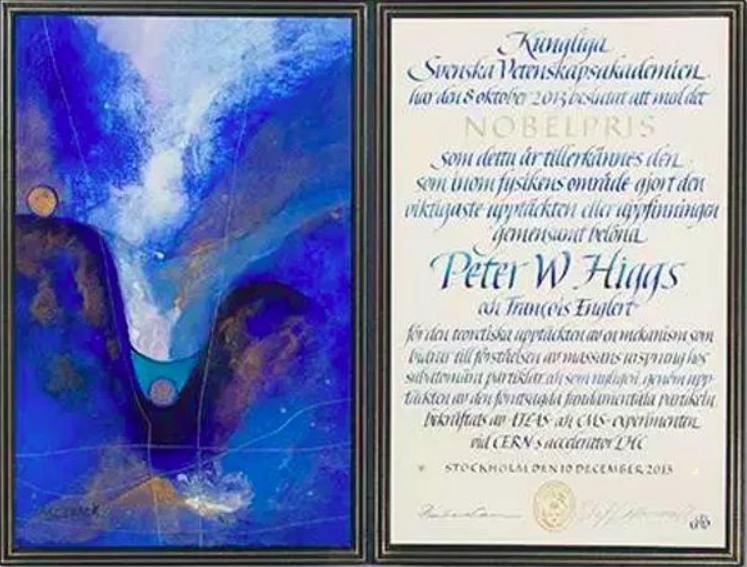
The Higgs mechanism proposed by Peter Higgs proved the mass of Higgs boson and predicts its existence. Although Higgs has not been discovered, it is still a great progress in particle physics, and Higgs himself won the 2013 Nobel Prize in Physics. The design of his certificate was really beautiful, with deep colors representing the infinite universe and two spheres representing particles.
vi. Isamu Akasaki
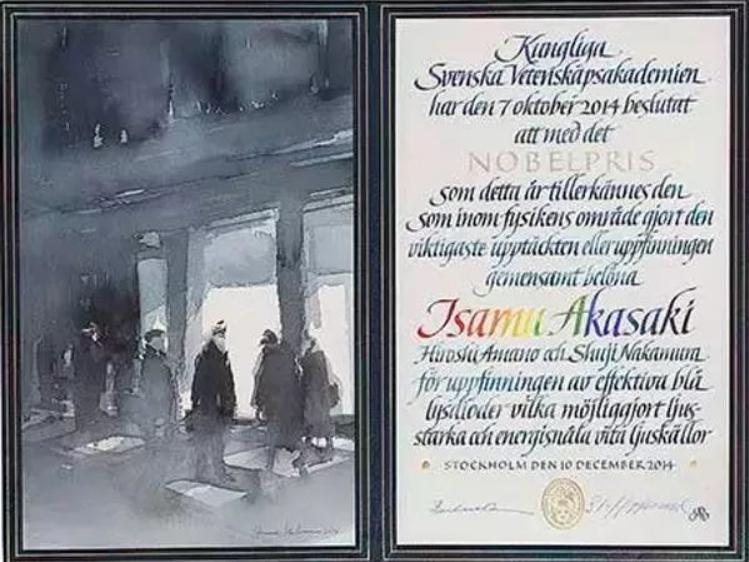
Akasaki won the Nobel Prize in Physics in 2014 for his invention of an energy-saving and bright light source: the color LED. The certificate is blue and gray on the whole, with street and window designs in the patterns, which symbolizes the impact on people's lives. Akasaki's name is displayed in color to highlight him.
III. Nobel Prize in Chemistry
The certificate of the Nobel Prize in Chemistry is also designed by the Royal Swedish Academy of Sciences, and the cover is red.
i. Marie Curie
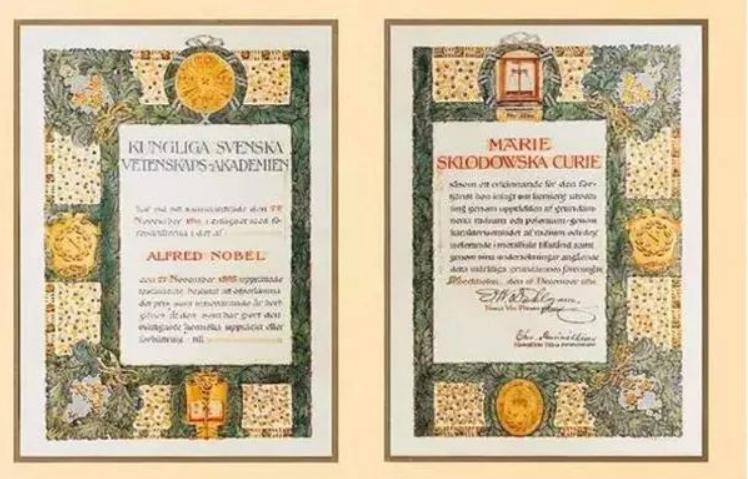
This is Marie Curie's second Nobel Prize. In 1911, she won the Nobel Prize in Chemistry for her discoveries of the elements polonium and radium. The overall design of the certificate is symmetrical on both sides, which is very normal and belongs to the early exquisite design style. It's a little feminine, and you can find the design elements of books and Libra if you look carefully.
ii. Fritz Haber
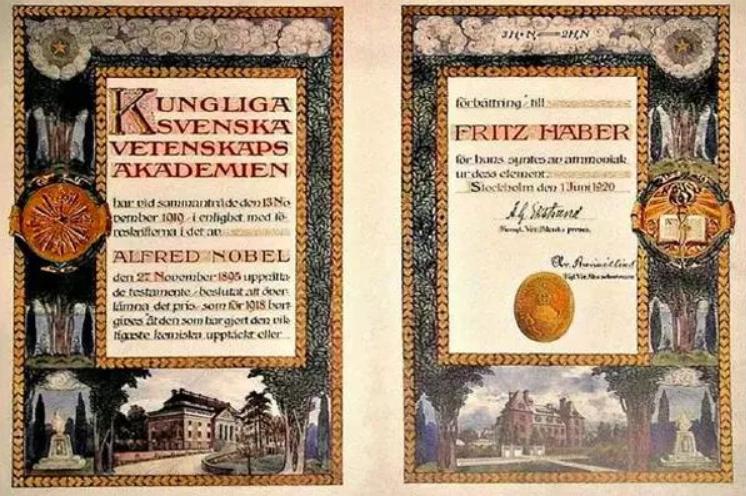
Fritz Haber won the Nobel Prize in Chemistry in 1918 for making ammonia. The year 1919 written on the certificate is the time he received the award, and there is also the formula for the production of ammonia by the Haber-Bosch process. His research made mankind free from the dependence on passive ammonia fertilizer and promoted the development of world agriculture. At the top of the certificate is the design of gas elements, and the elements of plants and cities implied his contribution to human development.
But the Jewish chemist is also controversial because he was involved in the development of poison gas during the war, causing millions of casualties. And this was condemned by scientists in the United States, Britain, France and China at that time.
iii. Ryoji Noyori, Knowles and Sharpless
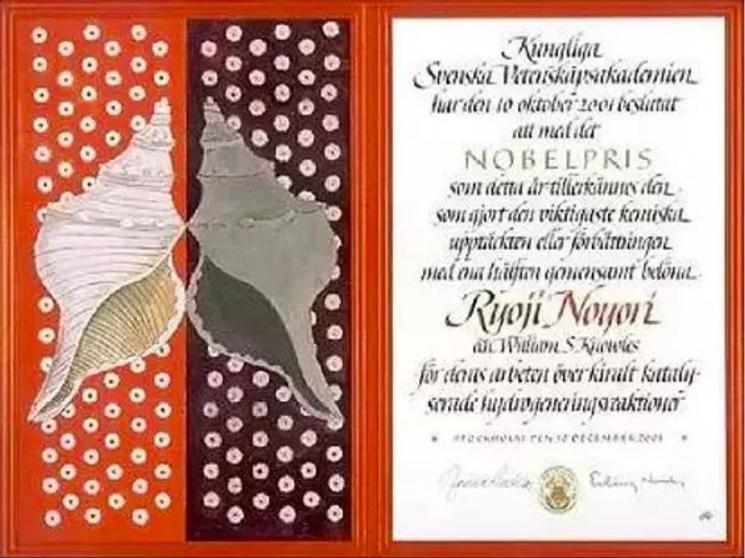
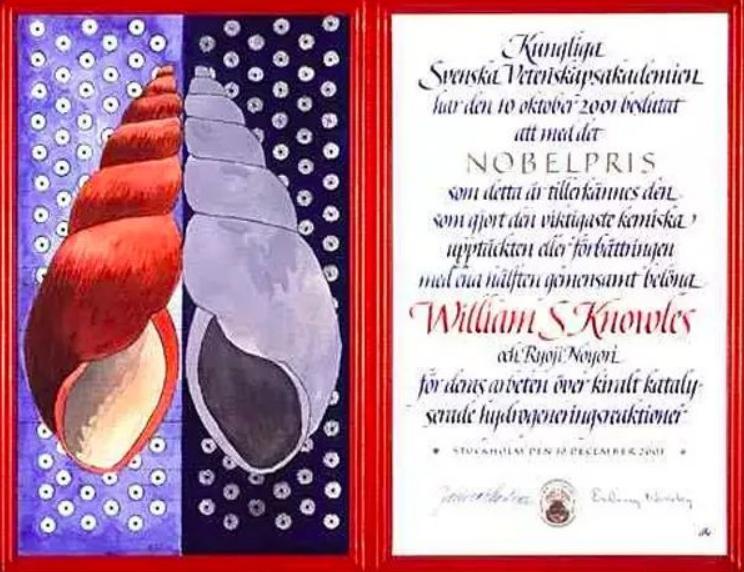
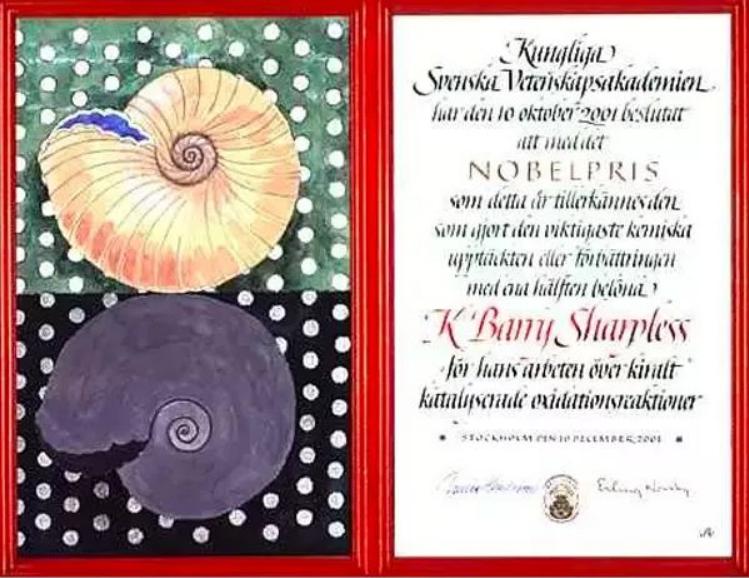
Ryoji Noyori, Knowles and Sharpless jointly won the 2001 Nobel Prize in Chemistry for their contributions in the field of asymmetric synthesis. The certificates of the three persons are also three kinds of patterns, but the style and design elements are the same, which is very consistent with their research. The pattern is symmetrical in design, but not in color or style.
iv. Martin Karplus
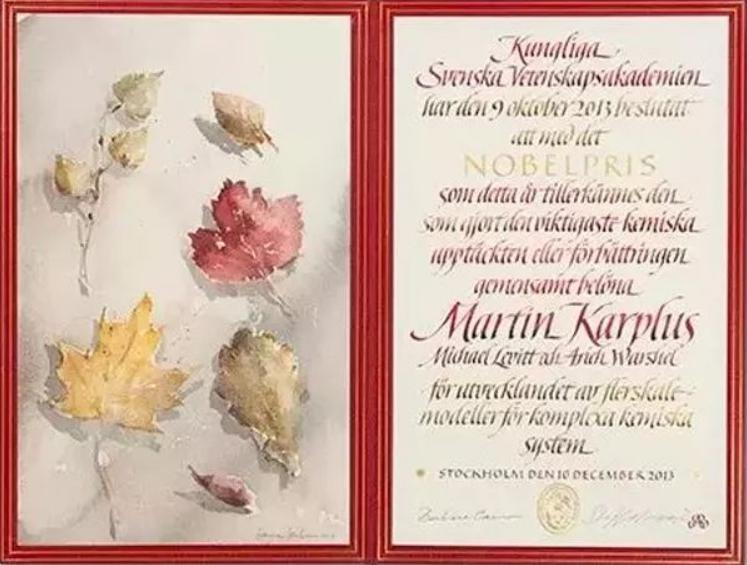
Martin Karplus is a Jewish chemist. In 2013, he won the Nobel Prize in Chemistry for creating multi-scale models of complex chemical systems.
IV. Nobel Prize in Physiology/Medicine
The Royal Caroline's Nobel Committee is responsible for the design of the certificate for the Medicine/Physiology Prize, and the cover is red.
i. Paul Ehrlich
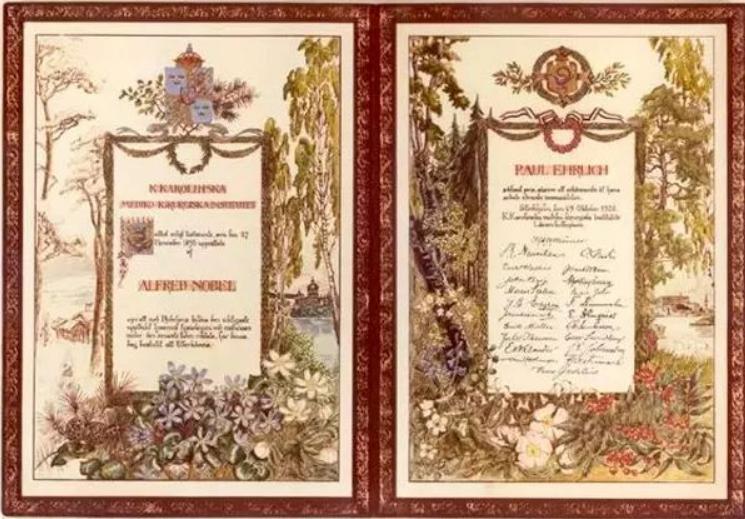
In 1908, Paul Ehrlich won the Nobel Prize in Physiology/Medicine for his discovery of cellular phagocytosis and autoimmunity. The designer created a vibrant nature on his certificate.
ii. Francis Crick
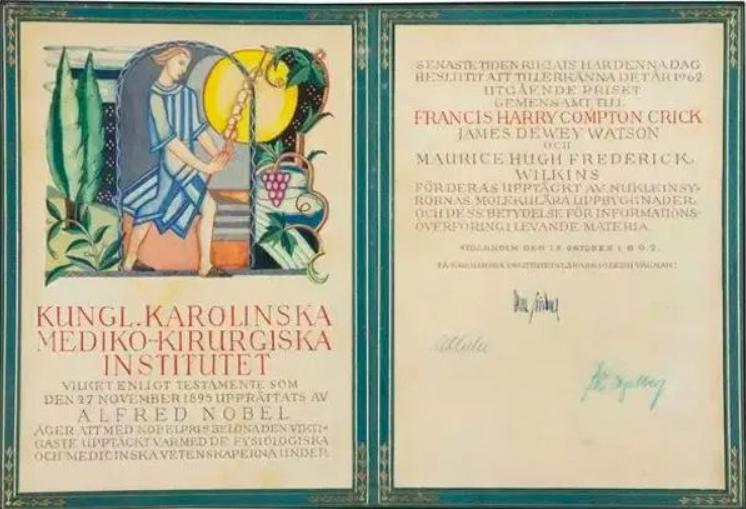
Francis Crick and James Watson discovered the double helix structure of DNA in the Cavendish Laboratory of Cambridge University in 1953, and they also won the 1962 Nobel Prize in Physiology and Medicine with Morris Wilkins. This medal is now preserved at Bermuda Regenerative Medicine Center and in this certificate, the designer obviously adopts the spiral element.
iii. Alexander Fleming, Florey and Chain
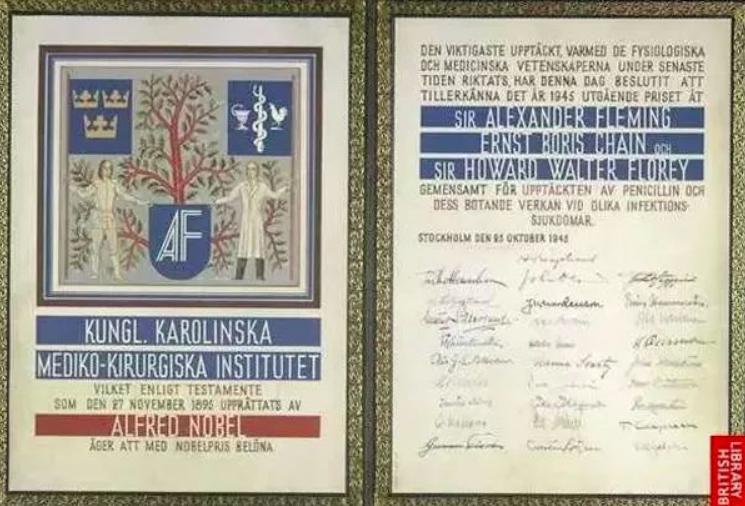
Alexander Fleming first discovered penicillin in 1928, and later, the British pathologist Florey and the German biochemist Chain further improved their research and successfully used it to treat human diseases. Therefore, the three jointly won the Nobel Prize in Physics. In this certificate, the top right corner is a medical symbol of healing and saving lives, and on both sides of the middle tree are doctors and soldiers. This is because during World War II, penicillin cured many people of their infections.
iv. Tu Youyou
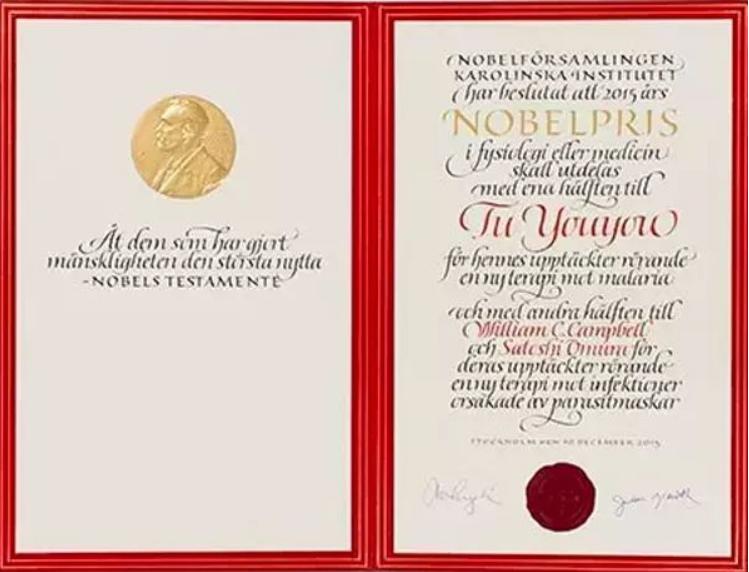
Tu Youyou won the Nobel Prize in Physiology/Medicine in 2015 for her discovery of artemisinin, thus becoming the first Chinese scientist to win the Nobel Prize in Physiology/Medicine.
Compared with other people's certificates, is Tu Youyou's too unconcerned? Actually not, this is because in 1965, the calligrapher Karl Eric Fosberg abandoned decorative paintings and left only a simple color medal pattern of beautiful fonts, which became a new Nobel Prize certificate style. Since then, this certificate has been used in physiology or medicine prize. That is to say, after 1965, the award certificates received by the winners are in such a simple style.
V. Nobel Prize in Economics
The Royal Swedish Academy of Sciences is responsible for lots of designs, it also designed the certificate of the Economics Prize since 1969, and the cover of this certificate is brown. The designer will be also very tired if the content of economics is expressed in the form of painting, so the design of economics prize winners is generally more abstract.
i. John Nash
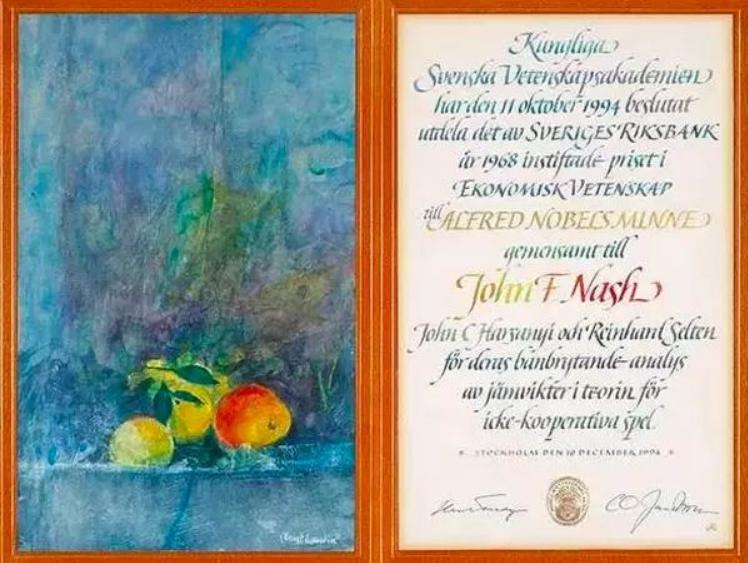
John Nash was awarded the Nobel Prize in Economics in 1994 for his work on non-game theory, which contributed to game theory and economics. This certificate design looks like a still life painting.
ii. Amartya Sen
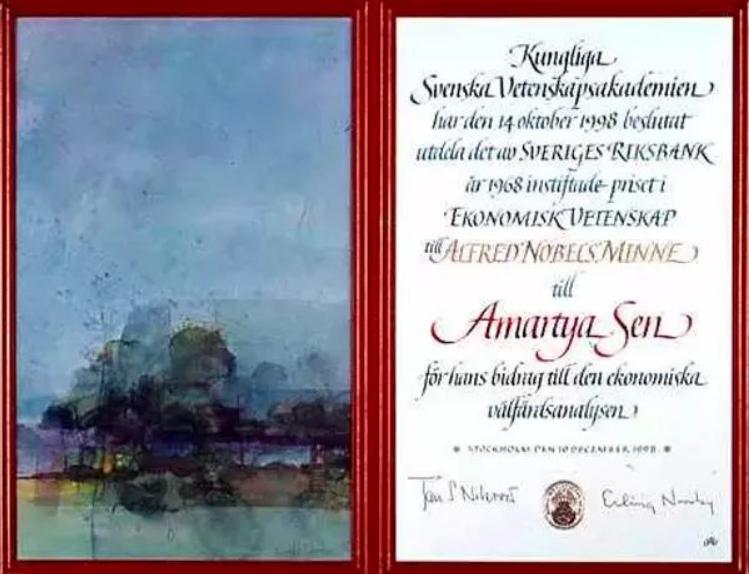
Amartya Sen, who won the prize in 1998, is known as the economist of the poor for her outstanding contributions to welfare economics. This painting design is the most abstract one I have seen so far.
iii. Paul Krugma
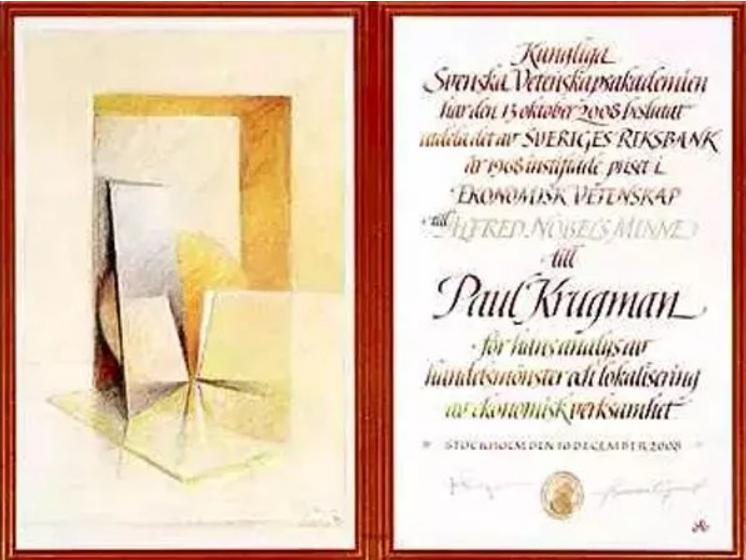
Paul Krugman was awarded the Nobel Prize in Economics in 2008 for his new theory of international trade. There are cubes, spheres and mirrors in the certificate design, all of which are simple geometric bodies.
VI. Nobel Peace Prize
Norway's Nobel Committee is responsible for the design of the Peace Prize certificate, and the cover color is purple.
i. Aung San Suu Kyi
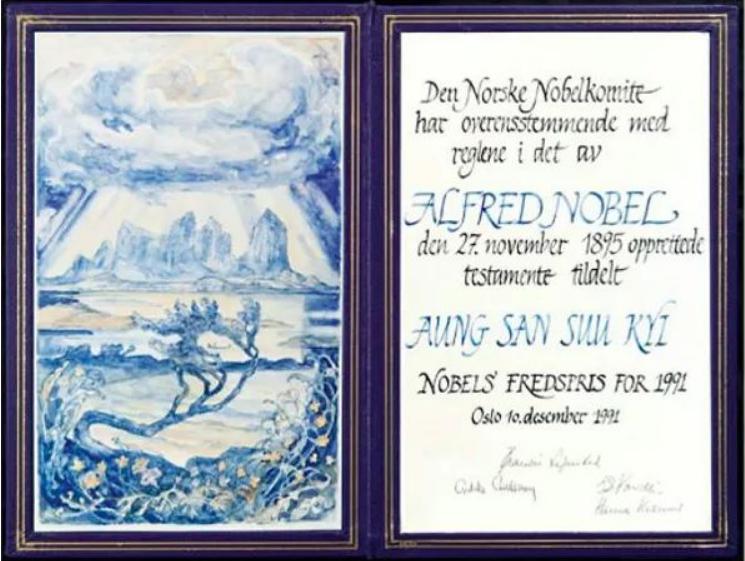
Aung San Suu Kyi is a Burmese politician who advocates non-violent democracy and won the Nobel Peace Prize in 1991, but she was still under house arrest. The painting inside the certificate is colored as a whole, giving people a sense of tranquility, and the dark clouds in the sky seem to have been dispersed by the sun, implying that she brings the light of democracy to Burma.
ii. ICBL
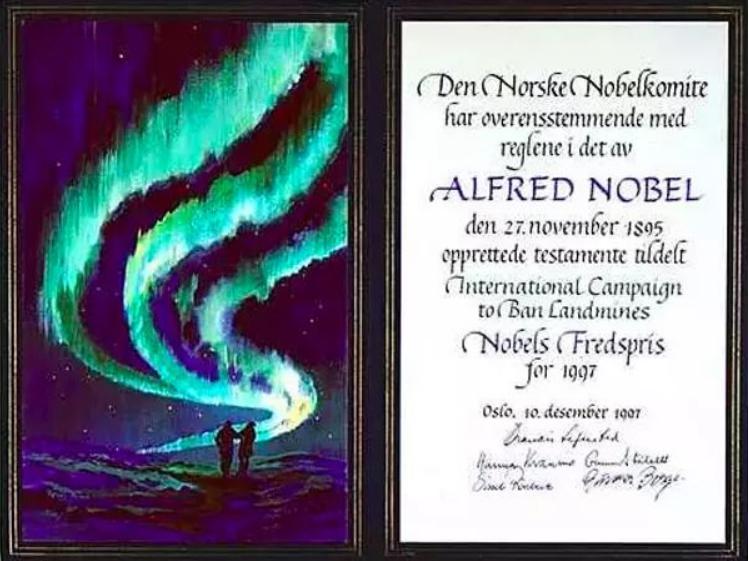
The International Campaign to Ban Landmines (ICBL) was first established in October 1992 when it was initiated by six non-governmental organizations. In December 1997, 122 countries had signed the Anti-Personnel Landmine Prohibition Treaty, which was the first treaty in the world to widely prohibit the use of traditional weapons. ICBL won the Nobel Peace Prize in 1997, and the element of the pattern design was aurora.
iii. Obama
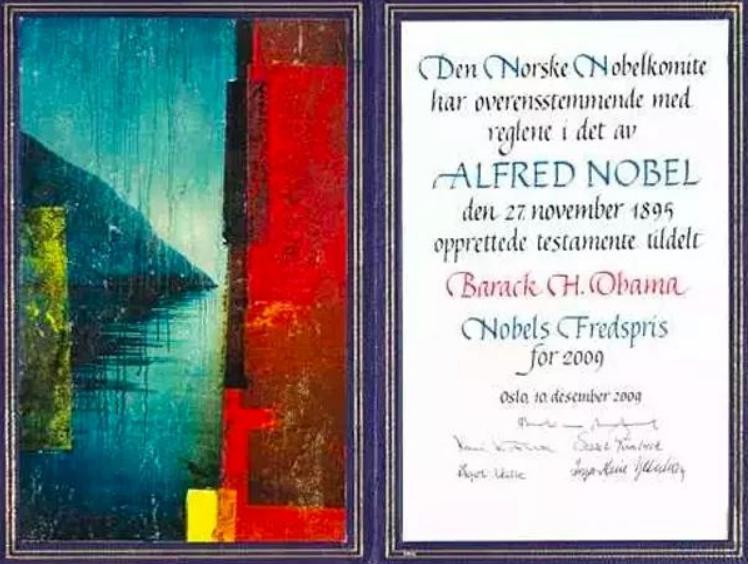
As the first black president in American history, Obama won the Nobel Peace Prize on October 9, 2009.
iv. Malala
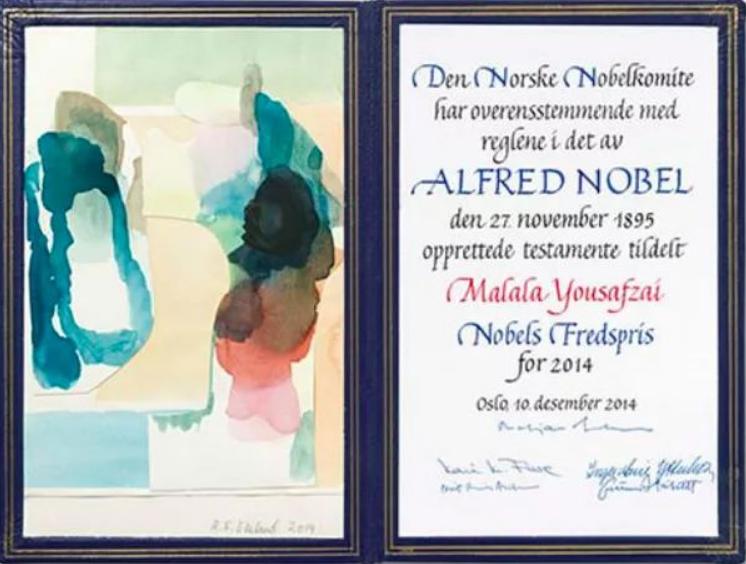
Malala, who was born in 1997, won the Nobel Peace Prize with Kailash Satyarthi in 2014 for her struggle for children's right to attend school. She is the youngest Nobel Prize winner so far. The painting design of this certificate is also very abstract, but it can be seen that several children are learning at their desks.
v. National Dialogue Quartet in Tunisia
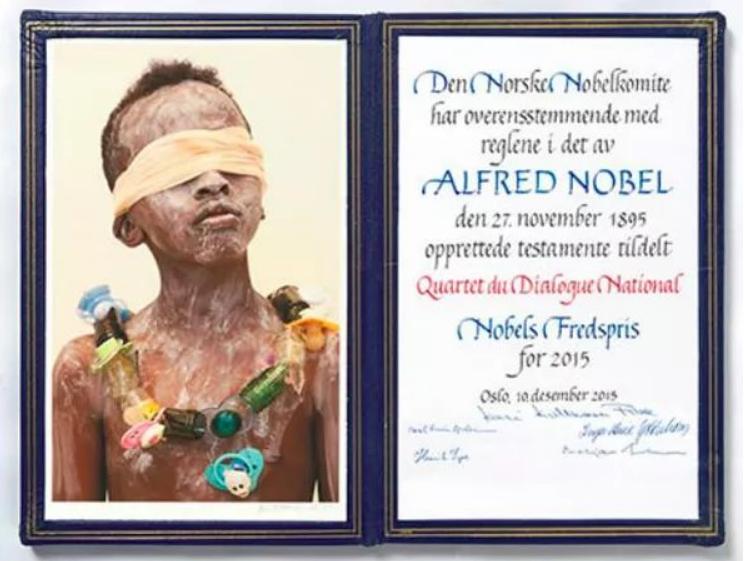
The National Dialogue Quartet in Tunisia was founded in October 2013 and is now recognized by Tunisia's political parties as a mechanism for resolving political crises. In 2015, it was awarded the Nobel Peace Prize for its role in promoting democracy in Tunisia. In the picture is a Tunisian child image, which fits the theme.
